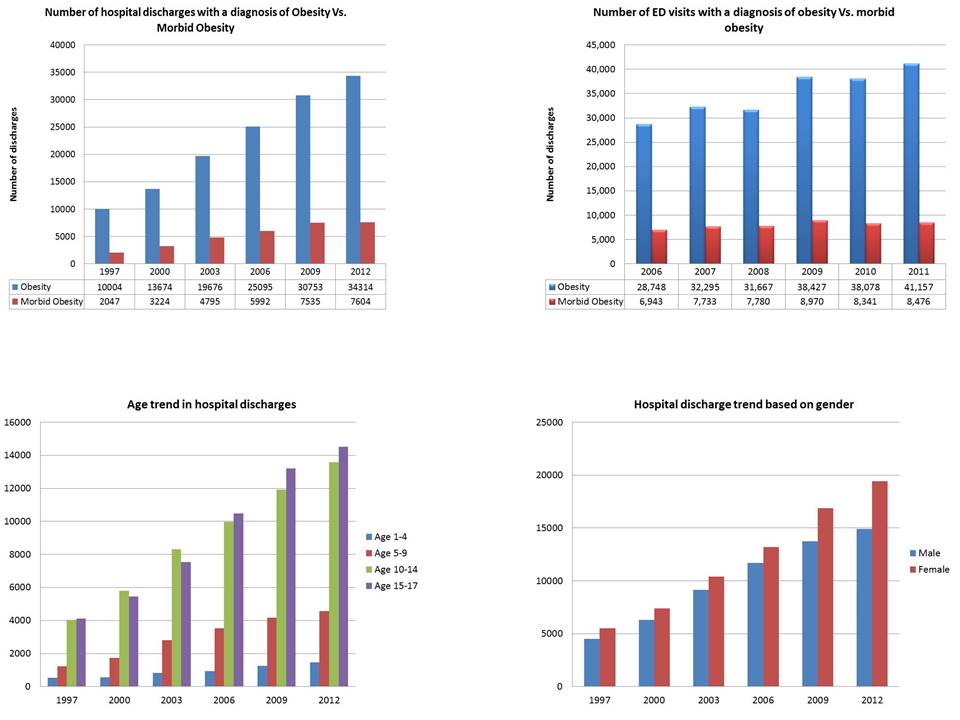Background: Pediatric obesity is a major public health and economic burden in the US. Recent reports suggest a possible crest in the pediatric obesity epidemic. Many researchers have focused on childhood obesity epidemic and comorbidities associated with it. To identify the growing problem of pediatric obesity, we used national data to look at the number of hospital discharges and ED visits in patients with obesity. Our objective was to report the trend of hospital discharges and hospital emergency department (ED) visits associated with obesity in the pediatric and adolescent population
Methods: For hospitalizations we utilized the Kid’s Inpatient Database (KID), Healthcare Cost and Utilization Project (HCUP), Agency for Healthcare Research and Quality (AHRQ), a triennial survey, for the years 1997-2012. For ED visits we utilized the Nationwide Emergency Department Sample (NEDS), HCUP, AHRQ, an annual estimate of national hospital-based ED visits for the years 2006-11 (all the years available). Both KID and NEDS are publically available through HCUPnet at hcupnet.ahrq.gov. We searched for obesity (ICD-9 code 278.00) and morbid obesity (ICD-9 code 278.01) as all-listed diagnoses (principal or co-existing condition). We examined total volume and subsets by age and sex for trends over time.
Results: Based on total weighted discharges for the year, hospital discharges for patients with obesity significantly rose from 1997-2012 (p<0.0001). ED visits with obesity also significantly increased from 2006-2011 (28,748 vs. 41,157, p<0.0001). Morbid obesity discharges also increased but not as steeply and ED visits have been stable. When stratified by age or gender, older children (10-14 and 15-17) and girls were more represented.
Conclusions: Neither 2012 KID nor 2011 NEDS show any decrease in obesity volume. Because those are billing datasets and evidence shows obesity is undercoded, it is likely the KID and NEDS are conservative estimates. Alternatively, some of the increase may be from increased attention to proper coding. Either way, obesity continues to be a significant pediatric problem.
